
Foundation Strains of the Present Breed
North American Colonial Spanish Horses
Native American Strains
Feral horses were not the only group to contribute to the Colonial Spanish Horse of today. Many foundation horses came from the horse herds of native Americans. The native herds were especially important early in this century.
Most of these tribal horses have only influenced the present breed through individual horses and not through groups of horses that continue to be bred pure within the strain. Tribes contributing to this are Cheyenne, Lakota, Paiute, Navajo, and a few others.
Horses from the Northern tribes contributed heavily to the Brislawn herd, along with the feral stock (mentioned below in Feral Strains) they used. The search is always on for breeders or families that have kept the original type pure, but these become increasingly rare as the years go on.
Tribal Types
A few tribal types have continued to be bred as distinct strains. The Choctaw and Cherokee horses are among these. Both of these tribes, in addition to the Chickasaw and Creek, were avid horse breeders in their original homes in the southeast. The quality of their horses is specifically mentioned as being excellent in various travel journals.
Following removal of these tribes to what is now Oklahoma, they continued to breed horses. The basis for these Oklahoma herds was horses brought from the southeast on the Trail of Tears, but no doubt some western horses were added as well.
The original horses were Spanish, obtained at first from the chain of missions across the deep South in early Spanish colonial days. Some of these horses have unique blood types as evidence of the accuracy of the oral history of isolation surrounding these herds.
Few breeders are trying to assure that this type of pure strain continues to the future as a part of the overall breeding of Spanish horses. Most of the present Choctaw horses re in herds of Bryant and Darlene Rickman, as are most of the Cherokee horses.
Many horses in the various registries are of partial Choctaw breeding, so the Choctaw strain has made a wide impact on the general Colonial Spanish Horse breed of today.
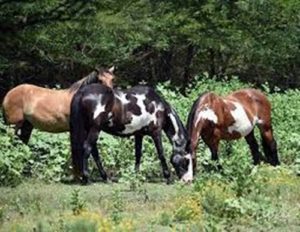
Nokota Strain
The Nokota horse strain is another interesting strain of horses with roots in the Native American herds. These aree raised by Frank and Leo Kuntz in Litton, North Dakota.
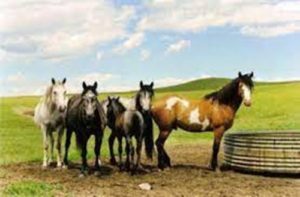
The horses have an origin in the herds of Sitting Bull, which were confiscated after his surrender. These horses were then raised by various ranchers in the Badlands, and some escaped to find feral herds.
Most of the horses were then crossbred, but some that were gathered from the more remote areas of the range still appear to be purely of Spanish type. The traditional type is now being conserved by the Kuntzes, and is being increased in number.
These horses are mostly black, blue roan, and grey, with some interesting overo patterns as well as bay and chestnut horses as rare varieties within the herd.
Other native tribal horses are rare and poorly documented. There is always hope that a few of the old strains are being quietly kept by some tribal breeders. This is especially likely in the full-blood communities which tend to be fairly isolated and treasure the old original cultures of the tribes.
Work is currently underway to find and assess these strains before they are lost as elderly breeders can no longer maintain them. This is a high priority for the conservation of the Spanish Colonial Horse, although only a very, very few of these re likely to persist.
Rancher Strains
Another important sub-type of Colonial Spanish Horses is the rancher strains. Some of these, such as Waggoner horses, figure not only in the background of the Colonial Spanish Horses, but were also used in the American Quarter Horse.
Most of the old ranch strains were Spanish in the 1800’s, with the later addition of horses from the Northeast. These additions were probably Morgans, light draft horses, Thoroughbreds, and the old, eastern sort of Quarter Horse.
The main type of ranch horse was bred increasingly away from its Spanish base. From the original and consistent Spanish base were developed the more common breeds that are associated with the American West: American Quarter Horse, Paint, and Appaloosa.
These have been largely separated on the basis of color, but were originally part of a population that included all of these colors. As selection has proceeded in these breeds with continuous out-crossing to Thoroughbreds and Quarter Horses the original Spanish influence has become minimal.
Belsky Horses
One rancher that kept the original Spanish type was Ilo Belsky. He ranched in Nebraska and his herd began from horses that were accompanying cattle driven from Texas in the late 1800s.
The best horses were kept, and then were selectively bred for most of Ilo’s long life. Belsky horses are now very rare as an unique strain of Spanish horses, but they do figure in the background of many Spanish Barbs.
Belsky popularized these horses as ranch horses very early in the history of the conservation of this type of horse. His horses were commonly roan, grey, dun, or dark colors. They tend, on average, to be heavier and more thickly made than some of the other strains, although some are the lighter type.
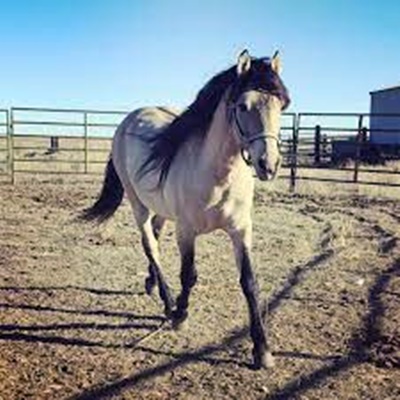
Romero/Gonzalez/Marques Horses
Another important rancher strain is the Romero strain. These are from a ranch near Cebolla, New Mexico where Spanish type horses were raised for generations. The Romero ranch passed to the McKinley family, but by now few if any horses of the original strain are still maintained on the original ranch. These horses figure heavily in some lines of Spanish Barb horses.
Another independent New Mexico line confusingly also involves a family named Romero, but is also associated with the Gonzalez and Marques families in the Rio Arriba County area. They were all involved in the active trade that New Mexicans had with the Comanche tribe for a period covering several centuries but most active in the 1800s. Some of these Romero/Gonzalez/Marques horses were gaited and also had very flashy calico paint patterns. This influence persists in some horses raised by Bob Ele and Gilbert Jones.
Gilbert Jones Southwest Lines
Gilbert Jones passed away in 2000. He was instrumental in maintaining Spanish horses of rancher strains.
Due to his moving from Texas to New Mexico and thence to Oklahoma, his herd had influences from a wide variety of sources. Early horses he had included many Kiowa, Comanche, and Chickasaw horses as well as some from Anglo ranchers such as Tom Waggoner.
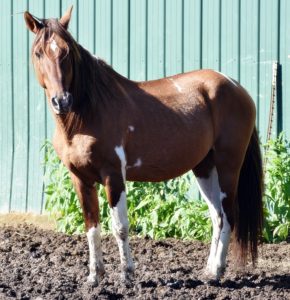
Some of the tribal horses were from strains of horses were from buffalo runners once frequently used on the Llano Estacado of Texas. These horses were all blended into a single strain.
When Bob Brislawn spent a few years in Oklahoma there was also exchange of Brislawn type horses and Jones horses. Later in the development of the strain were many Choctaw and Cherokee horses, and these represent a high proportion of the breeding of several Jones horses today.
His herd is one of the few sources of Waggoner, Tom East, Kiowa and comanche breeding left today.
Wilbur-Cruce Horses
As is typical of landrace type populations, newly discovered herds of Colonial Spanish Horses continue to come to the attention of breeders of this type of horse.
One herd fitting “newly found” is the herd of horses in Sasabe, Arizona which fits into the rancher strain category, although it also is the last remnant (so far known) of Spanish Mission type horses.
These are the horses of the Wilbur-Cruce family. This strain was begun with 25 mares and a stallion that were bought in 1885 from Juan Sepulveda who was a horse trader from Northern Mexico. The horses originated in the region of Mexico that was the area of Father Kino’s missions. This area had been a source of high quality horses since around 1700.
The original horses were kept as a closed sgtrain except for a single horse used for two years in the 1930’s. This horse is described as having been a “paint Morgan” from Colorado.
The description and location make it more likely that he was some sort of Spanish horse.
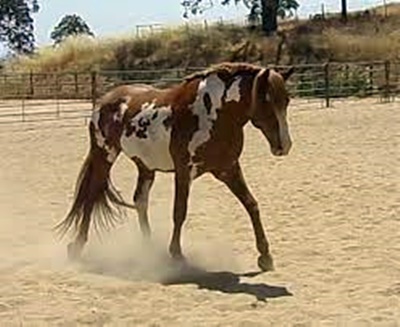
This stallion was traded for some of the Wilbur-Cruce strain and was turned out on the range. The ruggedness of the range combined with his being the new kid on the block make it doubtful that he contributed much to the herd.
The Wilbur-Cruce herd was brought to the attention of breeders of Colonial Spanish Horses in 1989, and illustrates an important point when dealing with landraces such as the Colonial Spanish Horse.
It is critical to the conservation of the genetic resource of these populations for the organized studbooks to remain open and receptive to inclusion of new pure herds as they are recognized and documented.
As time goes on such new herds will be recognized only rarely. They will always contain valuable genetic material for conservation as always important new discoveries. The Wilbur-Cruce horses are more variable in type than the horses in the registries, even though they do have a Spanish origin. This is interesting in that they are an example of a closed herd that includes some outlier Spanish types.
Feral Strains
Some of the purely Spanish horses remained in isolated feral herds. Such pure horses became rare fairly early in this century due to the practice of shooting the Spanish stallions and replacing them with draft or blooded stallions in an attempt to “improve” or “breed up” the feral herds as sources of draft or remount stock.
Bob Brislawn, founder of the Spanish Mustang Registry in 1957, used many feral horses in his herd. Several of his foundation horses were obtained from Monte Holbrook, an Apache living in Utah who was an excellent mustanger (capturer of feral horses). In addition to his abilities as a mustanger were those of his wife, Sadie, and their daughter and son.
All had reputations and abilities equal to Monte’s. Most of the feral component to the Brislawn horses was from Utah, although isolated horses from other herds contributed as well. The Brislawn horses contributed widely to the present breed.
Most of the feral herds that served as the original source for the Spanish Mustang Registry were subsequently contaminated with other breeds of horses, and are therefore no longer purely Spanish.
The horses within the SMR represent the only contribution that those once pure herds can now make to the breeding of the Colonial Spanish Horse.
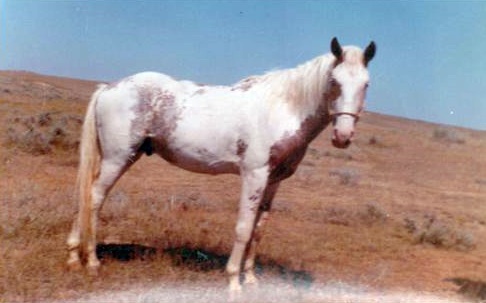
Bookcliffs of Utah
A later and major source of feral Spanish Colonial type horses were the herds in the Bookcliffs of Utah. These horses also figure prominently in the Brislawn as well as some other herds. In some herds these are still present as a unique strain.
In other remote parts of Utah there are still some Spanish type wild horses.
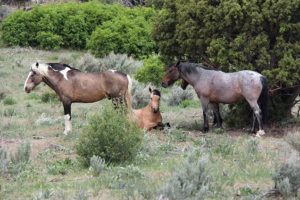
One such area is the Sulphur herd management area in Southwest Utah. Many of the horses from northern end of this management area have very Spanish type.
The usual colors in these herds are dun, grullo, red dun, bay, black and a few chestnuts. These horses show remarkable adaptation to their harsh environment.
These horses are currently attracting attention, as well as dedicated breeders such as Ron Roubidoux and Darcey Duce. A group of these horses was accepted into the SMR in 1994.
Cerbat Mountains, Arizona
Feral horses of the Cerbat Mountains in Arizona contributed to the Colonial Spanish Horse of today. The original group captured from this area was caught by Ira Wakefield, who was a very accomplished mustanger.
The Cerbat herds have a known history of purity on their present range since 1862. While Ira kept horses from a variety of sources throughout his long life, Cerbat horses re the only ones of his hat made an impact on the present Colonial Spanish Horse.
Today the Cerbat horses from the original capture have been supplemented by more recent Bureau of Land Management captures from the same ranges. The newer horses are identical in type to the older ones, giving added credence to the history of isolation and purity.
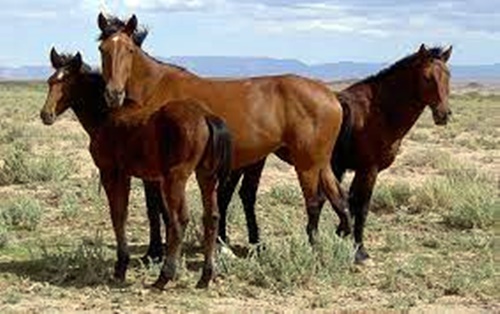
The Cerbat strain is used by a variety of breeders of Colonial Spanish Horses, and is also kept as a distinct strain by Marye Ann and Tom Thompson.
The horses come from a restricted range, and are very uniformly conformed. They also have some unique blood types, which is another indication of their value for conservation.
The feral Cerbat herds are still pure, and are being managed by the Bureau of Land Management to remain pure within themselves. These feral herds will hopefully continue to be a source of this unique genetic type along with animals of the same strain being raised domestically.
The Cerbat horses are a classic old Spanish type and are roan, bay, or chestnut.
The Kigers
The feral horses from the Kiger region in Oregon are usually included in discussions of Colonial Spanish Horses. These re feral horses that are selected to be dun, grullo, or red dun.
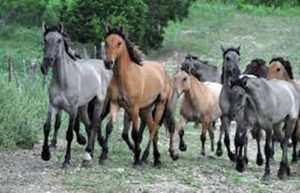
These are managed both in the feral herds and in herds of private breeders. The excess horses from the range herds are periodically rounded up and sold to interested buyers.
The conformation of horses in the herds is currently somewhat variable. Some are still of Spanish type, but others are smoother and taller than the usual Spanish type of conservation interest.
Regardless of whether this conformation is the result of crossbreeding in the past, or due to selection from a Spanish base, it is less useful to Spanish horse conservation than is the more distinctly Spanish type which also exists in the herds.
Pryor Mountain mustangs
The Pryor Mountain mustangs range on high terrain between Wyoming and Montana. Most of these horses have Spanish conformation, and the blood types of the horses are also those expected of horses with Spanish ancestry.
These horses are found along a major Crow and Shoshone migration route, and they probably have an origin in tribal horses. They are an interesting group since colors include bay, black, roan, chestnut, dun, grullo, roans, and a few buckskins and minimally expressed calico paints. This array of colors, especially the relatively high proportion of black and black based colors, is also consistent with a Spanish origin.
The Pryor Mountain mustangs are an important resource for Spanish Horse conservation in North America. The Pryor Mountain mustangs are fortunate in inhabiting the first wild horse refuge that is specifically set up to conserve mustangs.
That they are Spanish is an added bonus, and private individuals are now becoming interested in conserving this type.
The BLM has also recently been acknowledging the uniqueness of this herd and is working to preserve the Spanish type on this range. This herd is one of the most accessible feral horse herds, and seeing these horses in their home environment is well worth the trip to this range.
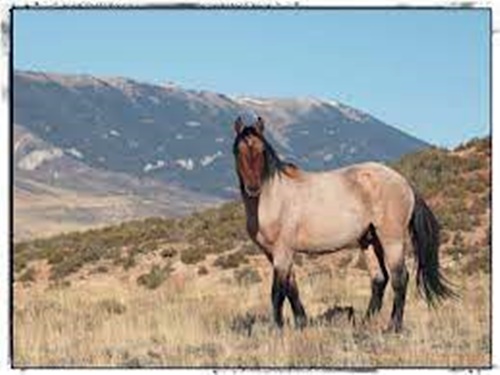
Other feral horses that are included in the foundation horses of the registries are usually individual horses with the correct Spanish appearance rather than an entire group of horses such as the Cerbats or the Holbrook group.
These individual horses came from North Dakota, California, Utah, Nevada, Arizona, and New Mexico. None of these represent a line of breeding in the same way that the Holbrook/Brislawn horses or the Wakefield/Thompson/Cerbat horses do since none have been bred within the original group.
They do, however, contribute importantly to the overall mix of feral contribution to the Colonial Spanish Horses.
Most feral herds remaining today are crossbred with non-Spanish horses. Recent success, especially with the Pryor, Cerbat, Sulphur, and Kiger horses, has stimulated some investigation into the feral herds that are controlled by the Bureau of Land Management for other herds of Spanish type.
If other herds of the correct type are found then the history of the feral horses in the area will be considered, along with blood typing information, in order to determine if any of these herds should be added to the list of Spanish type herds.
These can be managed to guard against incursion of non-Spanish horses. Such a program has several advantages. It keeps the feral Colonial Spanish horse in the original environment so that selection pressures keep working to produce environmentally resistant horses. The BLM also finds it easier to adopt out this type of horse rather than the usual crossbred type. If any other feral Spanish herds remain besides these four, they are probably very, very few in number.
The above information was gathered from an article written by Dr. Phillp Sponenberg, DVM, Ph.D who teaches at Virginia Tech Veterinary College and is the author of “Equine Color Genetics.” He has worked closely with the Rickman Ranch in saving the Choctaw/Cherokee/Hausteca strains of Spanish Mustangs from extinction. For the complete article visit http://www.conquistador.com/mustang-two.html